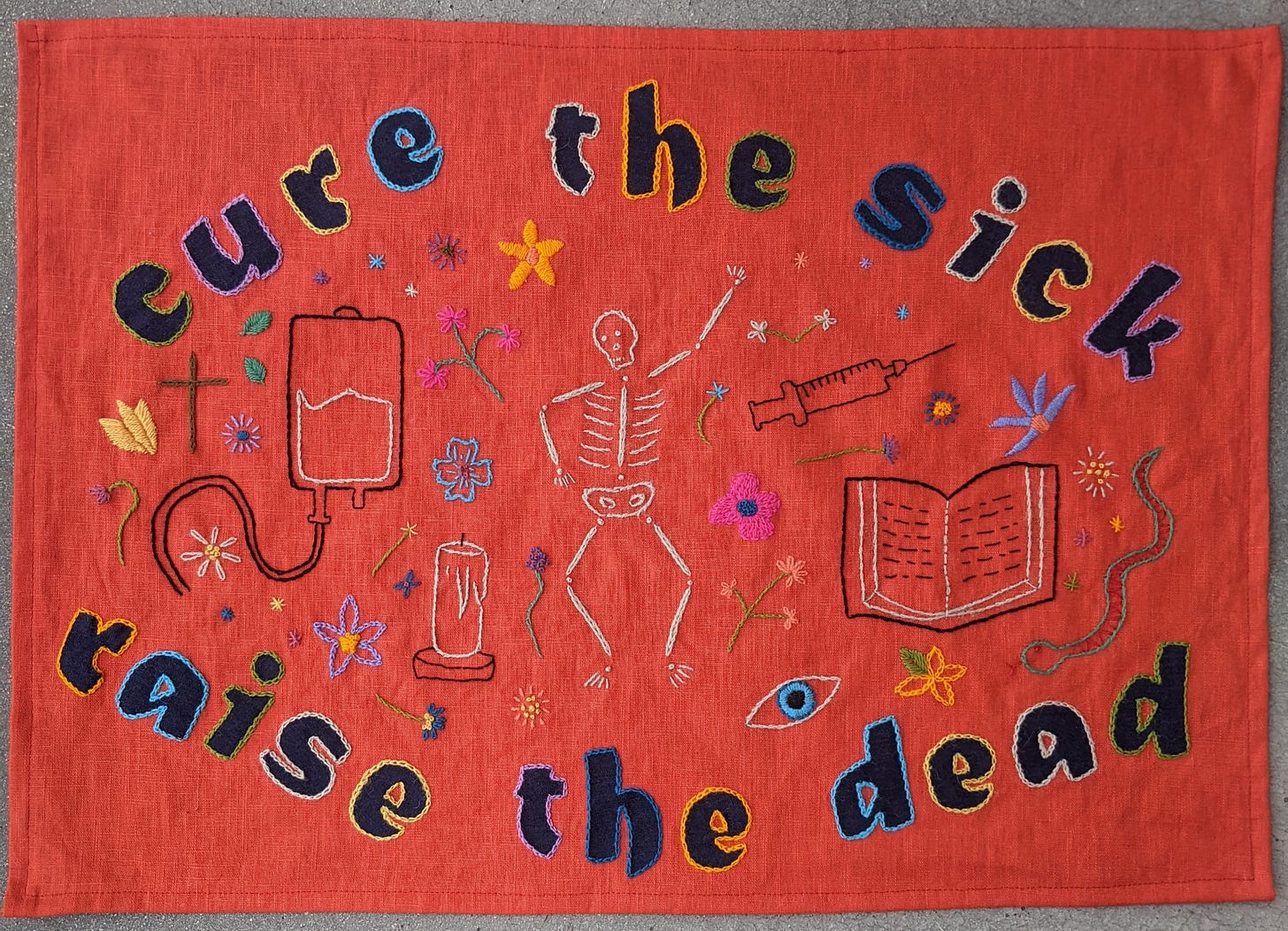Cure the Sick, Raise the Dead
Linen panel with appliqué lettering, perle cotton and crewel embroidery
This piece is inspired by protest banners: this is primarily a demand for a world without illness. It’s also an exploration of modern medicine as a form of miracle practice. The banner text is a biblical quote adapted from the Book of Matthew (10:8), where Jesus commands the apostles to go out and perform various miracles. Other potential miracles suggested in this verse include healing people with leprosy, which is easily achieved today with a combination of antibiotics.
I think often about how, if I had been born at almost any other time in history, with the body I have now, I would likely have died of a burst intestine aged four. What would my life look like through the eyes of a person living two thousand years ago? The blood transfusion I received as a child, depicted on this banner, is an unremarkable medical procedure today, but in another historical context could be seen a miraculous forestalling of death itself, or possibly a kind of occult ritual.
About Sharp Scratch
I’ve been trying to tell the story of my body for years. It’s probably the best story I have to tell: a vivid mix of body horror and comedy. I’ve tried poetry, autofiction, and memoir, but I’ve never quite been able to make it work.
Perhaps some of the problem is that I spend a lot of time and energy trying hard to minimise and hide this part of my life. I rarely outwardly identify myself as a disabled person, even to people I know well, and I don’t like to talk about the messy reality of my life with chronic illness. There are varying and complicated reasons for this, but a big one for me is that inflammatory bowel disease is fundamentally gross. I worry that talking about it openly could upset or disgust people. There is a huge social stigma attached to talking about extreme digestive issues, shitting blood, colostomy bags – and that’s before we get to the really bad stuff (at least when it comes to my own experience).
Not talking about these things also has a cost. Almost any time I come across something written about disability or illness that touches on my own experiences, I find myself feeling uncomfortable or annoyed by the sense of second-hand shame and pity other mostly able-bodied people seem to have on my behalf. This leaves me with a sense that often people just don’t get it, which is frustrating, but also isn’t something I’m helping by avoiding talking about it on my own terms.
Lately, though, I’ve had a lot of motivation to make art that draws on my experiences of illness and disability. In some ways I’ve been making textile art out of these themes for most of my life. I used to sew clothes for my Barbie dolls out of hand-painted surgical gauze, a material I had a big supply of growing up. Recently, some of the work I’m happiest with are the embroidery pieces where I stitch out the everyday ephemera of chronic illness. I share my embroidery on my Instagram but feel I have more to say about it than fits into a caption. My hope with Sharp Scratch is to create a space to reflect on disability, textiles, and art, both in a personal and a general sense. It’s not the only thing I have to talk about, but for now it feels like the most important, so this is where I’ll start, and see where I end up.



